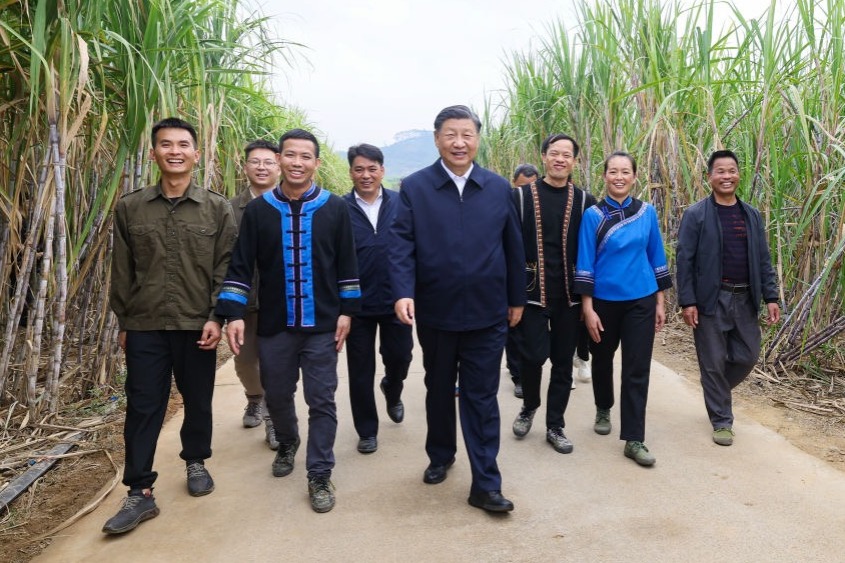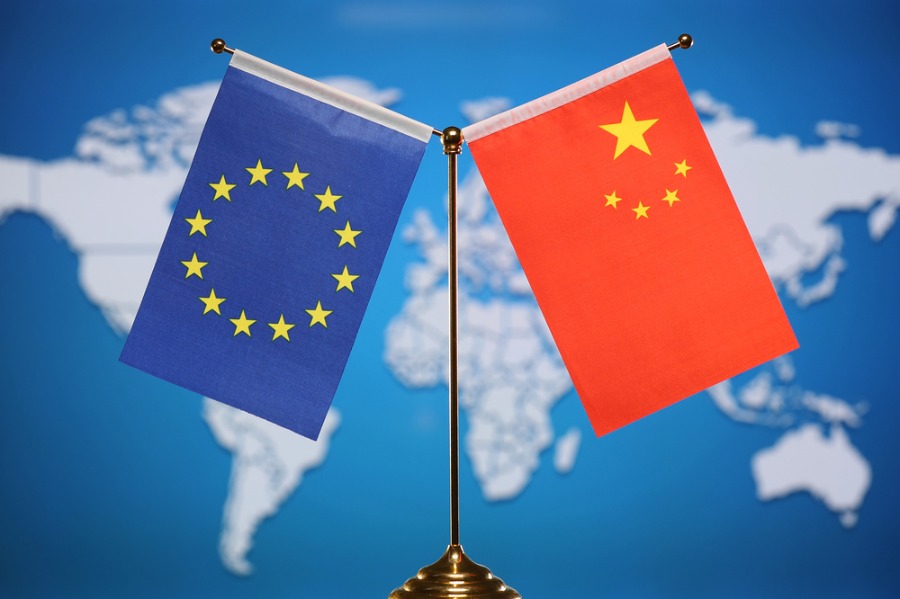Widened trade surplus
China needs to step up efforts to boost domestic demand and promote steady, robust recovery of its economy while adjusting its external imbalances


China needs to step up efforts to boost domestic demand and promote steady, robust recovery of its economy while adjusting its external imbalances
China and the European Union are making preparations for the 10th China-EU High Level Economic and Trade Dialogue scheduled to take place this month. However, in early August, Valdis Dombrovskis, the European Commission's executive vice-president and trade commissioner, mentioned the trade imbalance between China and the EU, arguing that the "staggering "deficit between the EU and China underscored the need for Beijing to open its markets.
One of the biggest features of China's economic growth during the COVID-19 pandemic was the rapid growth in exports accompanied by notably slower growth in imports, thus resulting in a surging trade surplus. The country's goods trade surplus more than doubled from nearly $407 billion in 2019 to $843 billion in 2022. During the period, China's current account surplus climbed from 0.7 percent to 2.3 percent of its GDP.
In recent years, China's trade surplus has indeed rebounded substantially, but its current account surplus is not too high relative to the total economic volume of the country and the relationship between its total external economic and trade volume is still basically balanced.
According to the International Monetary Fund's latest External Sector Report 2023 released in July, China's external position in 2022 was broadly in line with the level implied by medium-term fundamentals and desirable policies. This is a rather objective, reasonable and positive judgment.
However, China's trade surplus increase occurred in the context of the overall rebound of global trade imbalances during the COVID-19 pandemic, because the European and US economies faced supply-demand imbalances and inflation during the crisis, and objectively needed to expand imports to fill the gap between supply and demand. China's goods supply was less sharply impacted by the pandemic due to the country's containment strategy in fighting against the pandemic and its economic policies. That, combined with China's weak domestic demand, pushed up Chinese exports and China's trade surplus.
Furthermore, a rebound in China's trade surplus in recent years has also been caused by the following factors.
To start with, as an emerging economy, China is witnessing rapid changes in technologies and industrial structure. The dynamic changes in some tradable sectors' comparative advantages will push up exports and trade surplus. A typical example is that, in recent years, China has witnessed an explosive growth in its exports of electric vehicles, lithium batteries and solar cells, dubbed the "new three" products.
The combined export volume of the "new three" products increased from less than $22 billion in 2019 to around $120.7 billion in 2022, an increase of nearly $100 billion within three years. For instance, the new three's combined export volume to France reached $1.54 billion in 2022, accounting for roughly 15 percent of China's goods trade surplus with France (around $10 billion).
Second, the renminbi has depreciated sharply against the US dollar and the euro in recent years, exerting a significant short-term impact on China-US and China-EU trade imbalances.
The nominal US dollar-renminbi exchange rate has risen from 6.3 in March 2022 to 7.2 in July 2023, which means that the renminbi has depreciated by 17.7 percent against the US dollar. Given the price gap between the two countries, from the beginning of 2021 to July 2023, the renminbi has depreciated by 26.3 percent against the US dollar in real terms.
The renminbi has also depreciated sharply against the euro. The nominal euro-renminbi exchange rate has risen from 7.1 in April 2022 to 7.9 in July 2023, signaling that the renminbi has depreciated by 11.3 percent against the euro. In real terms, the renminbi has depreciated by 18.6 percent against the euro. China's 2022 trade surplus with the US and the EU increased by 35 percent and 83 percent respectively compared with 2019.
Third, the US-led Western countries have imposed a number of restrictions on exports to China's high-tech sector, reducing exports of those products to China that could have been well-liked and widening China's trade surplus with those countries. For instance, due to export controls imposed by the US, in 2022, Chinese imports of integrated circuits from the US decreased by 23 percent from the previous year.
Last, China's economic downward pressure in recent years has dragged on the country's imports and widened its trade surplus.
The Chinese economy has been facing downward pressure since 2018, with a lack of momentum for the growth in domestic demand. The annual average growth rate during the COVID-19 pandemic stood at 4.7 percent, which is notably lower than the potential growth rate. Macroeconomic prosperity has remained low, a sign of relatively weak domestic demand.
With the global economic landscape evolving since the turn of the century, external imbalances have intermittently become a hot topic in global economic and trade policy discussions. China is inevitably dragged into the disputes due to the growth of its trade surplus.
Amid the COVID-19 pandemic, external imbalances substantially rebounded on a global scale. But the US and the EU adopted a neutral policy stance toward the rising trade deficit because their domestic supply fell short of demand and their economies were hit by record high inflation. However, recently, as the inflation pressure has eased and growth has assumed a higher priority, the world's major economies with high trade balance deficits may bring up again the topic of trade imbalances.
Alongside normalization of economic activity and the easing of the inflationary pressure in the post-pandemic era, the world's major economies are likely to see their trade deficits shrink, with less imports conducive to the shrinking of China's trade surplus and preventing trade imbalances between China and other countries from further escalating.
China urgently needs to take comprehensive measures to lift domestic demand to avoid passive growth in its trade deficits caused by insufficient domestic demand. An economic re-balancing will help eliminate the risk of disputes arising from trade imbalances.
China needs to promote steady, robust recovery of its economy while adjusting its external imbalances. A lack of growth momentum for domestic demand has for years been a prominent problem in the Chinese economy and exerted a certain impact on the rising trade surplus in recent years. While saying that "China's external position in 2022 was broadly in line with the level implied by medium-term fundamentals and desirable policies", the latest IMF-ESR report also said the widened current account surplus reflected sluggish imports on the back of weak domestic demand.
Against such a backdrop, China needs to make greater efforts to strengthen counter-cyclical adjustment in monetary and fiscal policies. In the meantime, the nation should remain committed to advancing necessary reforms to rev up the intrinsic growth momentum.
Lu Feng is a professor of economics at the National School of Development at Peking University. Li Xin is a professor at the School of Statistics at Beijing Normal University. The authors contributed this article to China Watch, a think tank powered by China Daily. The views do not necessarily reflect those of China Daily.
Contact the editor at editor@chinawatch.cn.









































